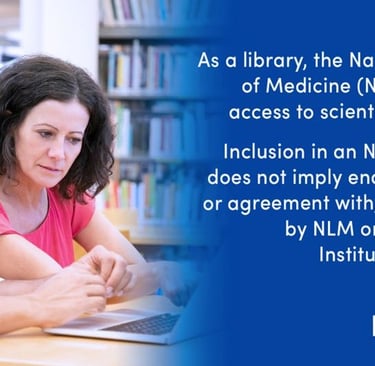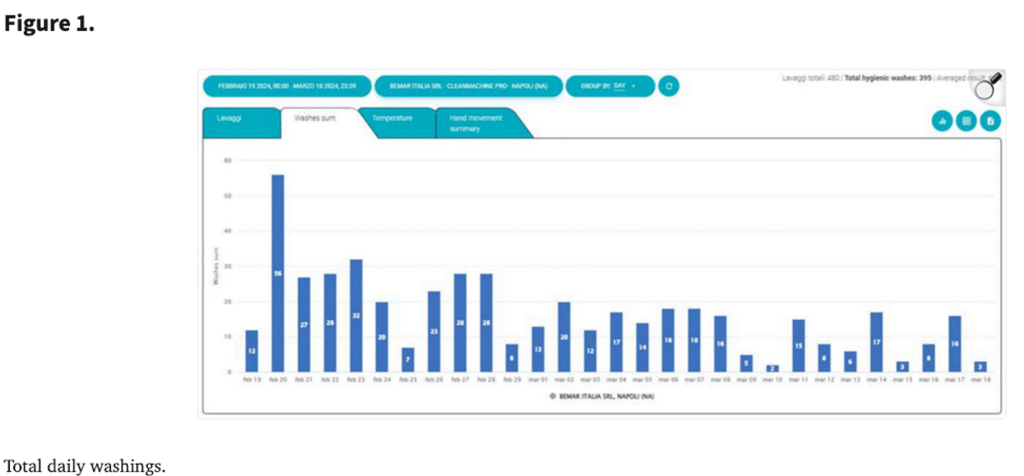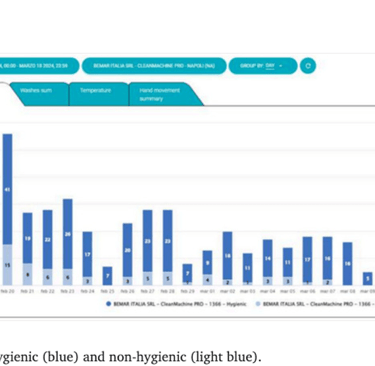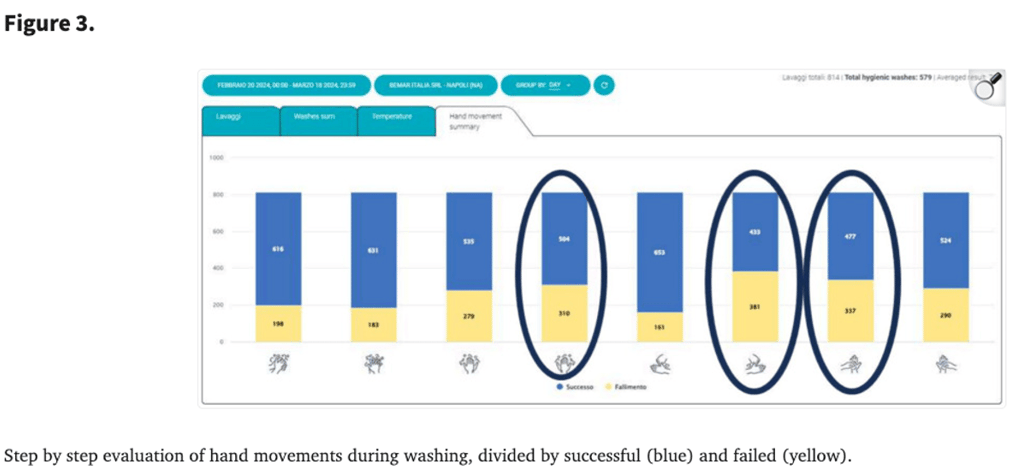AI in Healthcare: Infection Prevention Insights on hand hygiene
Explore the latest PubMed publication on how artificial intelligence (AI in healthcare) is transforming training and reporting of infection prevention measures in critical wards, enhancing patient safety and healthcare efficiency.
CLINICAL STORIESEDUCATIONAL / HISTORICAL
Francesca Simioli, Anna Annunziata, Antonietta Coppola, Anna Iervolino, Mariacristina Boccia, Giuseppe Fiorentino
10/18/20255 min read


INTRODUCTION
There is a strong interest in managing healthcare-associated infections (HAI) and cleaning as a preventive method. Microorganisms such as vancomycin-resistant enterococci (VRE), methicillin-resistant Staphylococcus aureus (MRSA), multiresistant Gram-negative bacilli, norovirus, and Clostridium spp. persist in the hospital for days. These pathogens are often diffused by patients and staff, and also, they contaminate surfaces for days and increase the risk of acquisition for other patients. Environmental screening confirms repeated contamination of items, equipment, and general sites in bed spaces and rooms of colonized or infected patients and often throughout multiple clinical areas in a health care institution (1). Health care workers’ hands are liable to touch these contaminated surfaces during patient care, which increases the risk of onward transmission to others (2). Unrecognized environmental reservoirs may also act as a focus for outbreaks or ongoing sporadic transmission. Recent studies suggest that the risk of acquiring VRE, MRSA, Acinetobacter spp., Pseudomonas spp., or C. difficile is increased if a new admission is placed in a room previously occupied by a patient known to be colonized or infected with one of these pathogens (3–5). Environment and healthcare professionals play a key role in pathogen transmission. Survival percentage of each species or strain on floors and other surfaces could determine the rate of HAI risk for long-stay patients.
A recent meta-analysis (6) showed that HAI sepsis is of major public health importance, and the burden is particularly high in intensive care units (ICU). There is an urgent need to improve the implementation of global and local infection prevention and management strategies to reduce its high burden among hospitalized patients. Sepsis can occur as a complication of infections acquired in the community, which is reported to represent up to 70% of all sepsis cases according to Reinhart et al. (7). It can also develop from HAIs that are mostly preventable by appropriate infection prevention and control (IPC) measures (8). According to a 2011 global report by the World Health Organization (WHO), HAI prevalence varies between 5.7 and 19.1% hospital-wide (9). More recent data show that in Europe (10) and the USA (11), hospital-wide prevalence of HAIs is 6.5 and 3.2%, respectively. A multicenter prospective study in ICUs in Brazil suggested that HAIs play a relatively more significant role in epidemiological burden in low- and middle-income countries (12). Importantly, recent data showed that up to 55% of all HAIs can be prevented by the implementation of multifaceted IPC interventions (13), which would ultimately result in a significant reduction in hospital-acquired sepsis (HA sepsis) cases. However, most sepsis studies lack the differentiation between community-acquired and HA sepsis, and no systematic review on the global burden of HA sepsis has been conducted yet, including in the ICU setting.
Detergents and disinfectants can equally reduce the spread of pathogens, but there is a lack of quality evidence about cleanliness quality and its effect on clinical outcomes. Furthermore, cost-effectiveness is hard to evaluate.
AIM
The aim of this paper is to discuss the potential role of artificial intelligence (AI) for the training of healthcare professionals in critical departments of our hospital.


Creating evergreen content that ranks will not only improve the search engine ranking position of the brand’s page, but it also pulls traffic onto the companies webpage, which can then be directed towards a specific action. The actions could be clicking the ‘sign-up’ page or pushing readers to subscribe to a newsletter. Building on content with various engaging points with the intent of pulling high traffic is are good trigger to generate leads. But the quality of the content is a big dependent factor, as readers tend to shift away from an article or a blog if they find the content to be too time-consuming and difficult to read. Moreover, it’s also known as the timeless piece on the blog that will keep your blog ranking high in the SERP. The first phase of creating evergreen content is finding out the prerequisites to qualify as evergreen. The second requirement is to make sure the content is SEO-friendly and will rank on SERP. Therefore, you’ll have to go deeper into understanding Google Analytics to know what’s going to make your write-up work.


Methods
Our hospital was equipped for a training period of 4 weeks with the SoapyPro Mobile Hand Hygiene system, an intelligent micro-station for hand washing. It is fully automatic, customizable, and touch-free, equipped with Artificial Intelligence, which allows to evaluate the performance of social and antiseptic hand washing of any user. Moreover, Soapy is recognized as part of the technologies to support the management of hospital infections. According to Italian law 6386/23 section III (President Travaglino), the burden to testify compliance to prevention measures by the healthcare personnel is due and at the expense of the General Management.
Three machines were tested in the departments of Neonatal Intensive Care, Pediatric Cardiology and Adult Respiratory Care. Soapy is an intelligent sink that allows you to monitor hand washing by checking whether users have correctly carried out the most effective preventive measure, according to the World Health Organization, against the spread of Covid-19 infection. At the end of the washing, the AI gives precise feedback, which is immediate on each step: if the user received the soap in his hands (REAGENT), if the Soapy has detected the 8 steps of hand washing that the operator has carried out in sequence (LATHERING – RUB & SCRUB), if the operator has carried out the rinsing properly (RINSING), percentage of accomplishment and effectiveness (SMILE WITH %). A smile indicates effective hand washing, and it is achieved if the process is at least 60% correct. The hardware of the Soapy Clean Machine includes two sonars, one on the top and one on the left side. It also includes a recording cam with a LED light and a thermometer that measures the body temperature before and after the washing process. The step-by-step procedure is shown to the user by an LCD screen. The dedicated software is innovative. It can see and recognize all passages, from the emanation of the detergent to the middle of the hands, to the movements performed and the speed of rubbing. The system measures the surface that is actually rinsed.


The machine delivers a pleasant jet of instant hot water and uses a special patented hand cleaner, ensuring the correct duration of each wash cycle. Soapy is easy to install, uses biodegradable cartridges, and ensures up to 95% savings in water and electricity and up to 60% in reagents. Among the numerous functions, the possibility of identifying users both individually and in groups through semi-biometric recognition and recording the time, place, and number of washes, as well as measuring body temperature, to evaluate the accuracy of the procedures of hand cleaning. The device uses AI and the Internet connection to manage a touch-free guided cleaning system, including body temperature detection at each wash, which returns a report available in real time on the cloud platform “SoapyWisdom.”
It is important to specify that users did not receive specific training with The SoapyPro before this observation. This protocol itself is a test that aims to eventually use AI for the purpose of divulging the WHO-recommended 8-step hand washing protocol.
Insight into the Soapy technology and underlying algorithm is not the objective of the present discussion and is confidential.
Results
Three machines were tested in the departments of Neonatal Intensive Care, Pediatric Cardiology, and Adult Respiratory Care. The Soapy machine recorded 1704 washings (Figure 1), of which 1,254 (74%) were evaluated as successful and hygienic. The mean overall performance value was 68% (Figure 2).
Soapy In The News
ABOUT SOAPY
© 2025. All rights reserved Soapy Care LTD | Designed by VeloGTM LLC
